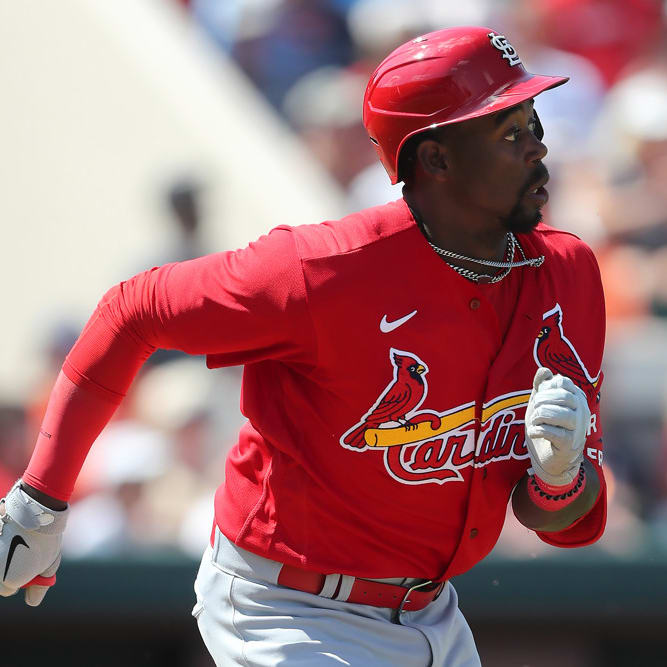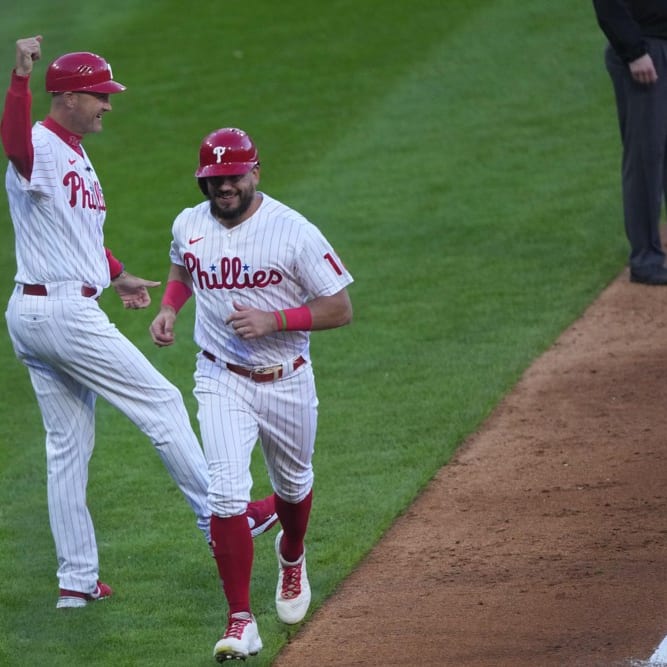This article is part of our MLB Barometer series.
I'm back in action following a vacation that saw me chuck a disc golf disc straight into a river and do something mysterious to my shoulder while scraping up both knees and an elbow within five minutes of stepping onto the tennis court. It's much safer here at my desk.
We're in a key period in the fantasy schedule, entering the final third of the season in most leagues or getting down to the last three or four weeks or the regular season in leagues with playoffs. The good news for those still trying to make up ground is that we remain in a period of disrupted rosters following the trade deadline, with some teams figuring out exactly where to slot in their new arrivals and others still yet to determine how to divvy up the playing time which their departures left behind. I recommend our Playing Time Changes tool for help keeping track of how rosters have shifted since the deadline.
Both arrivals and departures create the potential for overlooked additions down the stretch, but we're also entering the time of year where hot and cold streaks more frequently go unnoticed. Some of your leaguemates probably aren't noticing much at all at this point, with their heads fully turned by football, but there's also the fact that hot streaks don't show up clearly in season-long stats if they follow half a season of underperformance. Toss in the fact that trade talk dominated most of the recent discussion around the
I'm back in action following a vacation that saw me chuck a disc golf disc straight into a river and do something mysterious to my shoulder while scraping up both knees and an elbow within five minutes of stepping onto the tennis court. It's much safer here at my desk.
We're in a key period in the fantasy schedule, entering the final third of the season in most leagues or getting down to the last three or four weeks or the regular season in leagues with playoffs. The good news for those still trying to make up ground is that we remain in a period of disrupted rosters following the trade deadline, with some teams figuring out exactly where to slot in their new arrivals and others still yet to determine how to divvy up the playing time which their departures left behind. I recommend our Playing Time Changes tool for help keeping track of how rosters have shifted since the deadline.
Both arrivals and departures create the potential for overlooked additions down the stretch, but we're also entering the time of year where hot and cold streaks more frequently go unnoticed. Some of your leaguemates probably aren't noticing much at all at this point, with their heads fully turned by football, but there's also the fact that hot streaks don't show up clearly in season-long stats if they follow half a season of underperformance. Toss in the fact that trade talk dominated most of the recent discussion around the game and you can be forgiven for paying less attention to shifts in performance. This week's article will feature a mix of players riding hot or cold streaks and those who have seen their roles change, whether that's due to trades or other factors.
RISERS
 Ha-Seong Kim, 2B/3B/SS, Padres: Kim's wRC+ over the last five seasons tells a distinctive story of a dramatic fall and an equally dramatic rise:
Ha-Seong Kim, 2B/3B/SS, Padres: Kim's wRC+ over the last five seasons tells a distinctive story of a dramatic fall and an equally dramatic rise:
| Year | wRC+ |
|---|---|
| 2019 | 143 |
| 2020 | 141 |
| 2021 | 70 |
| 2022 | 105 |
| 2023 | 134 |
Of course, the story those numbers tell misses one major detail: the first two of those seasons were spent in the KBO. Those who watched Kim star for the Kiwoom Heroes when the KBO briefly held the baseball world's attention at the start of the pandemic would have been disappointed to see his offensive productive collapse entirely upon his move to this side of the Pacific, but his subsequent dramatic rebound serves as a reminder that we shouldn't judge players from overseas leagues too harshly on their first MLB campaign. Not only did Kim have to deal with the usual culture shock that comes with moving an ocean away from your friends and family, he also had to deal with an entire league's worth of new pitchers whose offerings he'd never faced. As far as I can tell, only five of his plate appearances as a rookie came against pitchers he'd faced in Korea: two against Kwang-Hyun Kim, plus one apiece against Chris Flexen, Josh Lindblom and Brooks Raley. Kim is now free of that handicap, and with nearly three years of experience against MLB pitching under his belt, he's now nearly as productive as he was prior to his move. Thanks in part to his .350/457/.538 line with six homers and 11 steals since the start of July, he now ranks in the top seven in earned value at second base, third base and shortstop. He's one of just four players (alongside Ronald Acuna, Kyle Tucker and Christian Yelich) to combine at least 15 homers, 20 steals and a batting average of at least .280.
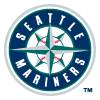 Andres Munoz, RP, Mariners: Munoz has been one of the best relievers in baseball since the start of last season, riding a 37.6 percent strikeout rate to a 2.59 ERA and 0.97 WHIP, but that only enabled him to secure four saves last year and just two more through the end of July this season. Some of that has to do with the Mariners' distaste for a traditional bullpen hierarchy, though much of it has to do with the presence of Paul Sewald, who's recorded 41 saves across the last two seasons alongside a similarly excellent 32.4 percent strikeout rate, 3.00 ERA and 0.89 WHIP. Seattle's decision to send Sewald to Arizona at the deadline boosts the fantasy appeal of both pitchers, but particularly Munoz. After spending the better part of two seasons as the second option in a committee, he's been the clear number one option in Sewald's absence, recording saves in each of his four appearances since the deadline. Matt Brash has one during that stretch, but that came after Munoz has pitched on back-to-back days, so it's conceivable that Munoz could look more like a true closer than a committee leader down the stretch.
Andres Munoz, RP, Mariners: Munoz has been one of the best relievers in baseball since the start of last season, riding a 37.6 percent strikeout rate to a 2.59 ERA and 0.97 WHIP, but that only enabled him to secure four saves last year and just two more through the end of July this season. Some of that has to do with the Mariners' distaste for a traditional bullpen hierarchy, though much of it has to do with the presence of Paul Sewald, who's recorded 41 saves across the last two seasons alongside a similarly excellent 32.4 percent strikeout rate, 3.00 ERA and 0.89 WHIP. Seattle's decision to send Sewald to Arizona at the deadline boosts the fantasy appeal of both pitchers, but particularly Munoz. After spending the better part of two seasons as the second option in a committee, he's been the clear number one option in Sewald's absence, recording saves in each of his four appearances since the deadline. Matt Brash has one during that stretch, but that came after Munoz has pitched on back-to-back days, so it's conceivable that Munoz could look more like a true closer than a committee leader down the stretch.
 Eury Perez, SP, Marlins: Yes, Perez's first start back in the big leagues following a month-long demotion to manage his workload wasn't one of his best, but the four runs he allowed to the Reds in 4.2 innings at least came with a 7:2 K:BB. The most important thing here is that he's back, and seemingly back to stay. We don't often see talents like this with big-league experience (and success) under their belt suddenly join the league for any reason other than a return from injury, so Perez could provide a unique opportunity in shallower leagues where he's been dropped. The Marlins will of course seek to manage Perez's innings down the stretch, as his 94.2 frames between Double-A and the majors this season already beat the 77 he managed last year by a significant margin, but the team said he could make 10 more starts the rest of the way, and fantasy managers are likely to want nearly all of them. Perez's 2.79 ERA through his first 12 major-league starts is helped by a .266 BABIP and an 88.0 percent strand rate, but even if his ERA risers to meet his 3.73 SIERA, he'll still be quite a useful pitcher given his 28.8 percent strikeout rate. The biggest worry for Perez's fantasy value is the fact that the Marlins could fall out of the race and elect to shut him down, but they're just half a game out of the playoffs as of writing, so such a move likely isn't imminent.
Eury Perez, SP, Marlins: Yes, Perez's first start back in the big leagues following a month-long demotion to manage his workload wasn't one of his best, but the four runs he allowed to the Reds in 4.2 innings at least came with a 7:2 K:BB. The most important thing here is that he's back, and seemingly back to stay. We don't often see talents like this with big-league experience (and success) under their belt suddenly join the league for any reason other than a return from injury, so Perez could provide a unique opportunity in shallower leagues where he's been dropped. The Marlins will of course seek to manage Perez's innings down the stretch, as his 94.2 frames between Double-A and the majors this season already beat the 77 he managed last year by a significant margin, but the team said he could make 10 more starts the rest of the way, and fantasy managers are likely to want nearly all of them. Perez's 2.79 ERA through his first 12 major-league starts is helped by a .266 BABIP and an 88.0 percent strand rate, but even if his ERA risers to meet his 3.73 SIERA, he'll still be quite a useful pitcher given his 28.8 percent strikeout rate. The biggest worry for Perez's fantasy value is the fact that the Marlins could fall out of the race and elect to shut him down, but they're just half a game out of the playoffs as of writing, so such a move likely isn't imminent.
 Lars Nootbaar, OF, Cardinals: Nootbaar was one of the buzzier sleepers during draft season, and while a pair of first-half trips to the injured list will likely prevent him from being a profitable pick overall, he's quietly (amidst the chaos of the worst Cardinals season in decades) gone on to do much of what his backers expected of him. He wasn't ever a player who projected for huge power and speed, and his month of lost time hurts his counting-stat totals, but he's on pace for a respectable 19 homers and 12 steals per 600 plate appearances to go with a very solid .276/.377/.439 slash line. He's also seen a notable improvement in several areas since the break, which could be related to the fact that his thumb and back issues are now further in the rearview mirror:
Lars Nootbaar, OF, Cardinals: Nootbaar was one of the buzzier sleepers during draft season, and while a pair of first-half trips to the injured list will likely prevent him from being a profitable pick overall, he's quietly (amidst the chaos of the worst Cardinals season in decades) gone on to do much of what his backers expected of him. He wasn't ever a player who projected for huge power and speed, and his month of lost time hurts his counting-stat totals, but he's on pace for a respectable 19 homers and 12 steals per 600 plate appearances to go with a very solid .276/.377/.439 slash line. He's also seen a notable improvement in several areas since the break, which could be related to the fact that his thumb and back issues are now further in the rearview mirror:
| Period | PA | BB% | K% | Barrel% | AVG/OBP/SLG | wRC+ |
|---|---|---|---|---|---|---|
| First Half | 258 | 13.6% | 22.1% | 8.4% | .259/.358/.382 | 108 |
| Second Half | 98 | 16.3% | 15.3% | 11.9% | .321/.429/.593 | 178 |
Nootbaar was a perfectly competent player in the early part of the season, but he didn't stand out anywhere except in his walk rate. He's gotten even better in that regard since the break but has also started making both more contact and higher quality contact, a promising combination. Nootbaar may have to cut down on his 53.9 percent groundball rate (eighth-highest among qualified hitters) if he's to unlock another level, but he's at least settling in as a strong cross-category contributor who leads off against righties for a lineup which deserves little of the blame for St. Louis' struggles, as the unit sits sixth in team wRC+.
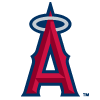 Chase Silseth, SP, Angels: Very little is going right in Anaheim at the moment, with the team beginning August with a seven-game losing streak that wiped out nearly all of their remaining playoff hopes right after they elect to buy instead of sell at the deadline. As Angels fans begin to contemplate an Ohtani-less future, Silseth is doing what he can to provide a bright spot. The young righty looked overmatched in his seven-start debut last season, struggling to a 6.59 ERA, but it's hard to be too harsh on him given that he'd thrown all of 31.1 career professional innings prior to his call-up. After splitting time in the first half between the Triple-A rotation and big-league bullpen, he was given the chance to start after the break and has produced an excellent trio of outings. In 17.2 innings, he's struck out 26 batters while walking just three, giving up a total of four runs on 11 hits. His stuff supports that sudden breakout, as he's used his reworked slider 34.7 percent of the time over those three starts, with batters managing a .118 wOBA against the pitch, while his splitter generated 12 whiffs in his most recent start against the Mariners.
Chase Silseth, SP, Angels: Very little is going right in Anaheim at the moment, with the team beginning August with a seven-game losing streak that wiped out nearly all of their remaining playoff hopes right after they elect to buy instead of sell at the deadline. As Angels fans begin to contemplate an Ohtani-less future, Silseth is doing what he can to provide a bright spot. The young righty looked overmatched in his seven-start debut last season, struggling to a 6.59 ERA, but it's hard to be too harsh on him given that he'd thrown all of 31.1 career professional innings prior to his call-up. After splitting time in the first half between the Triple-A rotation and big-league bullpen, he was given the chance to start after the break and has produced an excellent trio of outings. In 17.2 innings, he's struck out 26 batters while walking just three, giving up a total of four runs on 11 hits. His stuff supports that sudden breakout, as he's used his reworked slider 34.7 percent of the time over those three starts, with batters managing a .118 wOBA against the pitch, while his splitter generated 12 whiffs in his most recent start against the Mariners.
 Johan Rojas, OF, Phillies: Rojas is one of the Phillies' better prospects, but when he debuted at the start of the second half, his fantasy appeal initially seemed limited. His role appeared to be to fill the small side of a platoon with Brandon Marsh in center field while Cristian Pache (elbow) was sidelined, and there were reasons to doubt whether the 22-year-old's bat was ready to make the jump straight from Double-A. After 19 games, the projections remain pessimistic, with his expected wRC+ ranging from 64 (per ZiPS) to 83 (per ATC), but with playing time opening up for the next few weeks while Brandon Marsh battles a bruised knee, Rojas has the chance to establish himself down the stretch. He's looked capable at the plate so far, though his .320 batting average is clearly inflated by a .432 BABIP, and he's yet to record a barrel. What gives him fantasy viability is his legs, as he's already gone 5-for-5 on the basepaths after swiping 30 bags in half a season with Double-A Reading and stealing 62 (in 67 attempts) in 130 games the previous year. That same speed contributes to Rojas' most valuable asset to the real-world Phillies: his excellent outfield defense. If his hits keep falling while Marsh is out, that glove could earn him enough playing time after Marsh returns to remain fantasy-relevant for anyone looking for a burst of speed in the final weeks.
Johan Rojas, OF, Phillies: Rojas is one of the Phillies' better prospects, but when he debuted at the start of the second half, his fantasy appeal initially seemed limited. His role appeared to be to fill the small side of a platoon with Brandon Marsh in center field while Cristian Pache (elbow) was sidelined, and there were reasons to doubt whether the 22-year-old's bat was ready to make the jump straight from Double-A. After 19 games, the projections remain pessimistic, with his expected wRC+ ranging from 64 (per ZiPS) to 83 (per ATC), but with playing time opening up for the next few weeks while Brandon Marsh battles a bruised knee, Rojas has the chance to establish himself down the stretch. He's looked capable at the plate so far, though his .320 batting average is clearly inflated by a .432 BABIP, and he's yet to record a barrel. What gives him fantasy viability is his legs, as he's already gone 5-for-5 on the basepaths after swiping 30 bags in half a season with Double-A Reading and stealing 62 (in 67 attempts) in 130 games the previous year. That same speed contributes to Rojas' most valuable asset to the real-world Phillies: his excellent outfield defense. If his hits keep falling while Marsh is out, that glove could earn him enough playing time after Marsh returns to remain fantasy-relevant for anyone looking for a burst of speed in the final weeks.
FALLERS
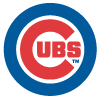 Seiya Suzuki, OF, Cubs: It's been a little over a month since I last wrote up Suzuki as a faller, but the situation has only deteriorated since then. The Cubs likely didn't envision Suzuki losing at-bats to Mike Tauchman in the second year of his five-year, $85 million deal, but that's where things stand at the moment, with Tauchman getting the nod in right field against all six of the righties the Cubs have faced this month. Suzuki has done nothing to claw back a larger share of playing time, hitting .215/.276/.329 in 87 trips to the plate since the break. His 28.7 percent strikeout rate and 8.0 percent walk rate both represent steps back from his first-half numbers (24.5 percent and 11.1 percent, respectively). That reflects the fact that he's continued the more aggressive approach which the Cubs have asked him to take, and it's continued to lead to poor results. It's clear from the graph below that Suzuki performs best when he swings less:
Seiya Suzuki, OF, Cubs: It's been a little over a month since I last wrote up Suzuki as a faller, but the situation has only deteriorated since then. The Cubs likely didn't envision Suzuki losing at-bats to Mike Tauchman in the second year of his five-year, $85 million deal, but that's where things stand at the moment, with Tauchman getting the nod in right field against all six of the righties the Cubs have faced this month. Suzuki has done nothing to claw back a larger share of playing time, hitting .215/.276/.329 in 87 trips to the plate since the break. His 28.7 percent strikeout rate and 8.0 percent walk rate both represent steps back from his first-half numbers (24.5 percent and 11.1 percent, respectively). That reflects the fact that he's continued the more aggressive approach which the Cubs have asked him to take, and it's continued to lead to poor results. It's clear from the graph below that Suzuki performs best when he swings less:
Perhaps the Cubs are thinking long-term with Suzuki's approach adjustment, figuring that increased aggressiveness is his path to becoming the hitter they thought they signed and the hitter whom the projections still have faith in. All of the publicly available projections at FanGraphs call for a better wRC+ going forward than his career 107 mark, and THE BAT X remains surprisingly optimistic at 132. That could force some difficult decisions in dynasty leagues this winter, but for now, Suzuki isn't playing often enough to have fantasy relevance in the majority of leagues.
 Elly De La Cruz, 3B/SS, Reds: Big power, big speed, a big personality and big strikeout issues was the scouting report for this big prospect (and big human) when he arrived in Cincinnati in early June. For the most part, that's all been true, though you could quibble a bit about the "big power" label, as a high groundball rate (51.8 percent) has meant that his raw strength has only turned into a fairly average 7.9 percent barrel rate. The bigger issue for De La Cruz is that his strikeout issues have risen to an untenable level in recent weeks. Prior to the All-Star break, he struck out 28.9 percent of the time, a number which definitely represents a weakness but hardly an unmanageable one. Mike Trout (28.8 percent) and Luis Robert (28.7 percent) own nearly identical marks this season, and they're pretty good hitters, I'd say. Since the break, that figure has jumped to 40.8 percent for De La Cruz, a number virtually no one ever has success with. Among players who came to the plate at least 250 times in the last decade, only Patrick Wisdom in 2021 and Keston Hiura in 2022 managed an above-average batting line while striking out over 40 percent of the time, and those aren't exactly the sorts of players De La Cruz wants to be compared with. A lack of contact has led to an inability to get on base (.243 OBP since the break) and in turn an inability to show off his wheels, with the young phenom swiping just a single bag in three attempts thus far in the second half.
Elly De La Cruz, 3B/SS, Reds: Big power, big speed, a big personality and big strikeout issues was the scouting report for this big prospect (and big human) when he arrived in Cincinnati in early June. For the most part, that's all been true, though you could quibble a bit about the "big power" label, as a high groundball rate (51.8 percent) has meant that his raw strength has only turned into a fairly average 7.9 percent barrel rate. The bigger issue for De La Cruz is that his strikeout issues have risen to an untenable level in recent weeks. Prior to the All-Star break, he struck out 28.9 percent of the time, a number which definitely represents a weakness but hardly an unmanageable one. Mike Trout (28.8 percent) and Luis Robert (28.7 percent) own nearly identical marks this season, and they're pretty good hitters, I'd say. Since the break, that figure has jumped to 40.8 percent for De La Cruz, a number virtually no one ever has success with. Among players who came to the plate at least 250 times in the last decade, only Patrick Wisdom in 2021 and Keston Hiura in 2022 managed an above-average batting line while striking out over 40 percent of the time, and those aren't exactly the sorts of players De La Cruz wants to be compared with. A lack of contact has led to an inability to get on base (.243 OBP since the break) and in turn an inability to show off his wheels, with the young phenom swiping just a single bag in three attempts thus far in the second half.
 Teoscar Hernandez, OF, Mariners: Hernandez's inclusion as a faller here is at least in part due to the fact that he missed out on the chance to escape Seattle at the deadline. Despite rumors linking him to multiple other destinations, he'll remain at T-Mobile Park down the stretch, the stadium which ranks last in park-adjusted wOBA per Statcast's three-year park factors. That's an issue for any player, but it's a particular problem for someone who's already trending in the wrong direction like Hernandez. The 30-year-old slugger has maintained an excellent barrel rate (14.0 percent), but he's seen both his strikeout (31.5 percent) and walk rate (5.3 percent) trend in the wrong direction, leading to an overall .243/.289/.415 slash line, with his wRC+ dropping from 129 in his final season in Toronto to a below-average mark of 95. Hernandez's K-BB% of 26.2 is at least two points worse than that of every other qualified hitter, so it's a credit to his ability to do damage on contact that he's even been close to average overall. He may end up even further from a league-average batting line if his current downturn doesn't reverse itself, however. In 98 plate appearances since the break, he's struck out 33.7 percent of the time and walked just once while recording a .219/.224/.333 batting line (48 wRC+).
Teoscar Hernandez, OF, Mariners: Hernandez's inclusion as a faller here is at least in part due to the fact that he missed out on the chance to escape Seattle at the deadline. Despite rumors linking him to multiple other destinations, he'll remain at T-Mobile Park down the stretch, the stadium which ranks last in park-adjusted wOBA per Statcast's three-year park factors. That's an issue for any player, but it's a particular problem for someone who's already trending in the wrong direction like Hernandez. The 30-year-old slugger has maintained an excellent barrel rate (14.0 percent), but he's seen both his strikeout (31.5 percent) and walk rate (5.3 percent) trend in the wrong direction, leading to an overall .243/.289/.415 slash line, with his wRC+ dropping from 129 in his final season in Toronto to a below-average mark of 95. Hernandez's K-BB% of 26.2 is at least two points worse than that of every other qualified hitter, so it's a credit to his ability to do damage on contact that he's even been close to average overall. He may end up even further from a league-average batting line if his current downturn doesn't reverse itself, however. In 98 plate appearances since the break, he's struck out 33.7 percent of the time and walked just once while recording a .219/.224/.333 batting line (48 wRC+).
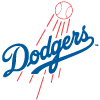 Emmet Sheehan, SP, Dodgers: A run of injuries and the underperformance of the Dodgers' other young pitching prospects opened up a pathway for Sheehan to debut earlier than expected, as his six no-hit innings against the Giants on June 16 came before he ever appeared at the Triple-A level. His Triple-A debut will be coming shortly, however, as he was demoted last Friday after a disappointing run of performances. Even his initial impressive outing came with a caveat in the form of a 3:2 K:BB, an issue which persisted throughout his eight big-league appearances. His 5.63 ERA was well-deserved according to the ERA estimators (5.80 xFIP, 5.49 SIERA), as he struck out just 18.6 percent of opposing batters while walking 11.2 percent. He also kept the ball on the ground just 31.0 percent of the time, meaning his 1.41 HR/9 could have been a good deal higher. Sheehan's control troubles didn't come out of nowhere, as he posted an 11.1 percent walk rate for his career in the minors, but his inability to put hitters away was a surprise given that he struck out over 40 percent of minor-league hitters prior to his promotion. He may need to figure something out at Triple-A before the Dodgers can trust him to get big-league hitters out.
Emmet Sheehan, SP, Dodgers: A run of injuries and the underperformance of the Dodgers' other young pitching prospects opened up a pathway for Sheehan to debut earlier than expected, as his six no-hit innings against the Giants on June 16 came before he ever appeared at the Triple-A level. His Triple-A debut will be coming shortly, however, as he was demoted last Friday after a disappointing run of performances. Even his initial impressive outing came with a caveat in the form of a 3:2 K:BB, an issue which persisted throughout his eight big-league appearances. His 5.63 ERA was well-deserved according to the ERA estimators (5.80 xFIP, 5.49 SIERA), as he struck out just 18.6 percent of opposing batters while walking 11.2 percent. He also kept the ball on the ground just 31.0 percent of the time, meaning his 1.41 HR/9 could have been a good deal higher. Sheehan's control troubles didn't come out of nowhere, as he posted an 11.1 percent walk rate for his career in the minors, but his inability to put hitters away was a surprise given that he struck out over 40 percent of minor-league hitters prior to his promotion. He may need to figure something out at Triple-A before the Dodgers can trust him to get big-league hitters out.








